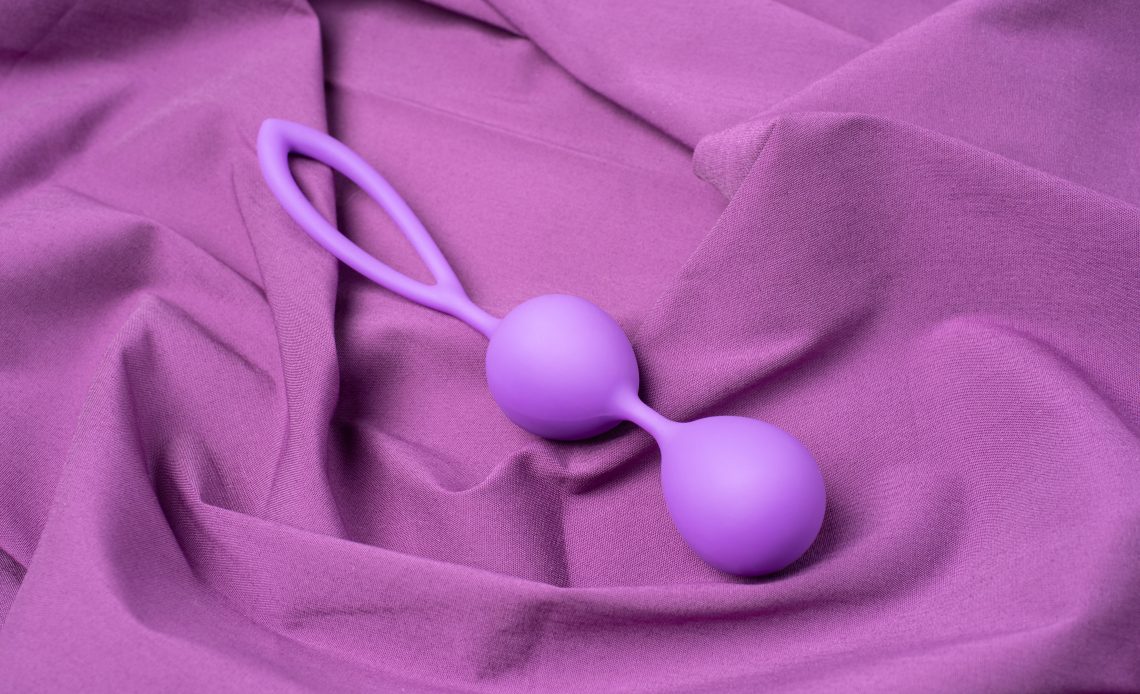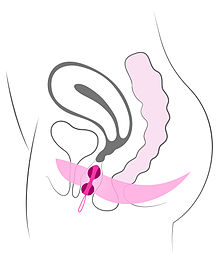
What is the Kegel?
Developed in the 1940s by Dr. Arnold Kegel, these are exercises designed to strengthen muscle tone and the pubococcygeal muscle, with the aim of reducing pelvic floor problems. It consists of a series of pelvic muscle contraction and relaxation exercises.
Why do Kegel exercises?
The muscles of the perineum are naturally involved in posture and breathing. However, after pregnancy or in cases of muscular imbalance in sportswomen, this natural solicitation may not be adequate. Kegel exercises are therefore recommended to strengthen the perineal muscles.
Kegels mean Geisha balls
Gone are the mischievous smiles: often considered as sex toys, they are first and foremost a useful accessory for the perineum. There are two methods for performing contraction exercises: passive and active. To use them effectively, there are two methods: passive or active. It’s up to you to choose the one that suits you best.

The passive way:
Gently place the geisha balls in the vagina without exerting pressure. Once in place, continue your normal activities. Use between 20 minutes and a maximum of 2 hours a day. During this time, you must be standing or moving.

The advantage of this method:
The work is done simply, without thinking about it. The perineum muscles instinctively contract by reflex to hold the accessory in the vagina. All the same, it’s essential to respect the time limit of 2 hours per day, otherwise the method will have the opposite effect, as the perineum will become fatigued.
The active way: with Kegel exercises
Once you’ve inserted the Geisha balls, take a deep breath and contract the perineal muscles around the balls. Hold the contraction for 2 to 5 seconds, adapting the duration to the strength of your perineal muscles. Then release the contraction, rest and relax for 10 seconds before repeating the process. Perform a series of 10 contractions in this way.
Alternatively, perform the exercises without equipment
Exercise 1: Maximum contraction
Lying on your back with knees bent, contract your pelvic floor muscles as you exhale. To begin, hold the contraction for 5 seconds while breathing normally, then release. Pause for 10 seconds between each contraction. When you feel comfortable with this exercise, increase the difficulty by sitting with your back straight. Finally, do it standing up. Increase the contraction time to 10 seconds with a 20-second rest.
Exercise 2: Rapid contraction
Repeat the same posture as in the previous exercise. But at the end of the exhalation, contract the pelvic floor muscles vigorously, then release them completely. Perform 3 sets of 10 contractions, pausing for 60 seconds between each set. Practice this exercise 5 days a week.
Exercise 3: Strengthening the perineum
To reduce pressure on the perineum, contract the pelvic floor muscles before coughing or sneezing. It’s also advisable to do the same before any physical activity, such as standing up, walking or lifting.
Benefits:
There are many benefits to practicing perineal exercises. These exercises prepare the perineum for childbirth, re-educate it, improve vaginal sensitivity during intercourse, increase blood flow and, consequently, vaginal lubrication. Although these exercises are generally associated with women, it’s important to note that men can also practice them.
Gentlemen, don’t be jealous: here are some exercises that are equally beneficial to you.
-
Pumping :
This involves performing a series of contractions, either slow or fast, holding the contraction for 5 seconds in the first case, or for one second in the second. Another option is to sit with legs slightly apart, hands on knees, torso bent forward and back straight.
-
Kegel erection:
We recommend placing a small towel over the erect penis, attempting to lift it, holding this position for a few seconds, then releasing it. For best results, repeat these exercises 10 times a day, taking care not to hold your breath during the muscle contraction. Over time, you can gradually increase the number of repetitions up to 20.
These exercises can help to improve erectile quality by promoting better blood circulation through muscular strengthening of the area concerned. They may also have a positive impact on erectile rigidity.
Caution: As with other muscles, you may experience soreness in the pelvic floor muscles. Don’t hesitate to rest for a few days when you feel pain until you recover.







